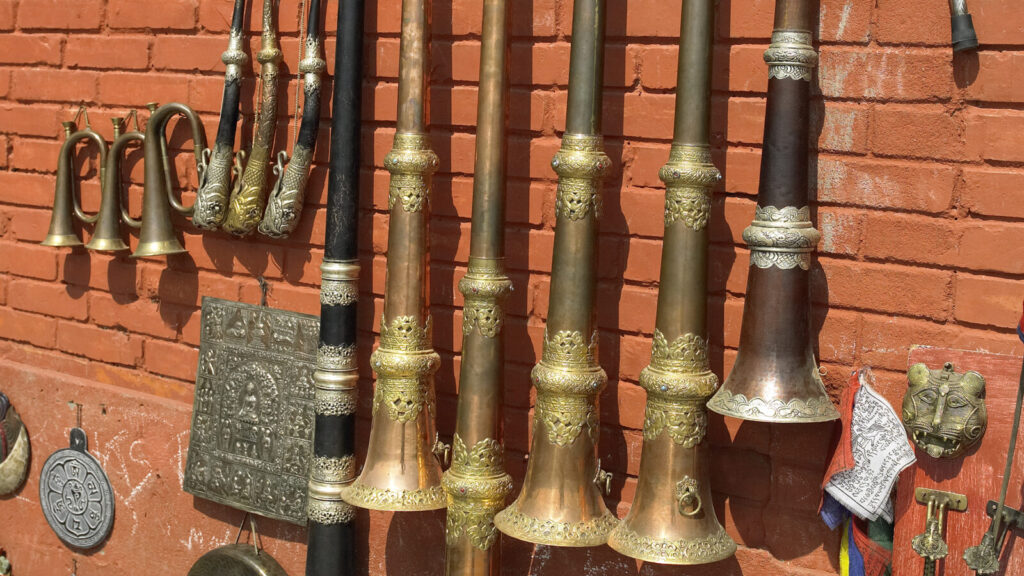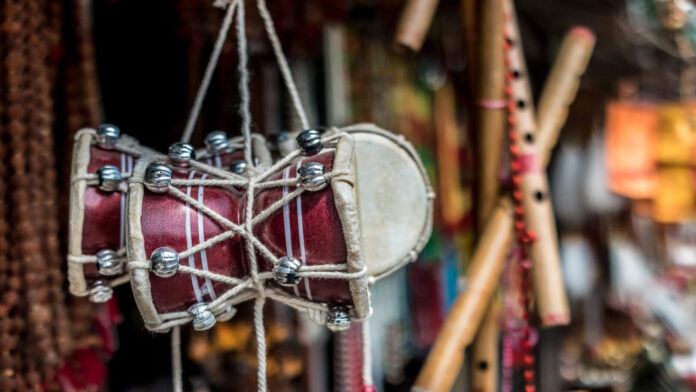By The Frontpage Journal
Sri Lanka’s musical heritage is deeply intertwined with its history, culture, and rituals. At the heart of this rich tradition are indigenous musical instruments that produce distinctive sounds echoing across temples, villages, and festivals. These instruments are not merely tools for entertainment; they are vessels of cultural memory and spiritual expression, sustaining a vibrant link between past and present.
Among the most iconic is the Geta Bera, a traditional drum that holds a special place in Kandyan dance and ceremonies. Made from hollowed jackfruit wood and covered with leather, the Geta Bera produces sharp, resonant beats that guide dancers’ movements and set the rhythm for processions. Its patterns and rhythms are complex and deeply symbolic, often mimicking natural sounds or storytelling motifs.
The Thammattama is another traditional percussion instrument consisting of two small, flat drums placed side by side. Played with wooden sticks, it adds a rhythmic texture to ensembles, especially during ritual dances and festivals. The Thammattama often accompanies the Geta Bera, creating a layered percussion dialogue that energizes performances.
Wind instruments also feature prominently. The Horanawa, a double reed instrument resembling an oboe, produces a piercing, melodic sound that is both haunting and celebratory. Traditionally, it was used in temple rituals and royal ceremonies to announce events or invoke blessings. The Ravanahatha, believed to be one of the world’s oldest string instruments, is a bowed fiddle with deep mythological roots. Its soulful tones narrate tales of heroism and divine intervention, linking music to legend.
Other instruments include the Dawula, a double-headed drum played with hands and sticks; the Udekki, a small hourglass-shaped drum capable of varied tones; and the Rabana, a large frame drum that accompanies folk dances and harvest celebrations. Each instrument carries regional variations and unique craftsmanship, reflecting the diversity of Sri Lanka’s cultural landscape.

The making of these instruments is an art in itself, often passed down within families. Skilled artisans select specific woods, animal skins, and natural dyes, ensuring the instrument’s sound quality and durability. The process is steeped in ritual, with respect for materials and tradition.
Music created by these indigenous instruments is more than sound; it is a living language. It accompanies Kolamperformances, Sanni Yakuma exorcisms, temple worship, and royal pageantry. It marks moments of joy, sorrow, and spiritual transcendence. The rhythms and melodies shape community identity and provide continuity in an ever-changing world.
In modern Sri Lanka, these traditional instruments face challenges from globalization and popular music trends. However, efforts to preserve and revive their use are growing. Cultural festivals, music schools, and collaborations with contemporary artists bring these ancient sounds to new audiences, both local and international.
For visitors and foreign readers, hearing Sri Lanka’s indigenous instruments offers an immersive experience into the island’s soul. It is an invitation to listen deeply—to the stories, history, and spirit carried in every beat and note.
Sri Lanka’s musical instruments are not just relics of the past but vibrant expressions of living culture. They remind us that music is a powerful connector—between people, generations, and the sacred rhythms of life itself.




